Inventory management is very crucial for every manufacturing or merchandising company. We will use a case study of a business Dolphin Videos to understand the basic concepts of inventory management. In this post we will address the following key issues related to cost effective inventory management:
1. What are the different types of costs associated with Inventory Management?
2. How to determine the minimal purchase order quantity which should be ordered to minimize the cost of Inventory Management?
3. How to determine the optimal number of purchase orders per year to meet the annual demand?
4. How to forecast annual relevant total cost?
5. What inventory level should trigger a new purchase order?
6. How much safety stock should be carried to address unexpected increase in demand?
7. How an ERP like Microsoft Dynamics AX can help manage your inventory cost effectively?
1. Different Types of Inventory Costs:
There are 5 different types of costs associated with inventory:
1.1 Purchasing Costs:
Purchasing costs are the costs of goods acquired from suppliers including incoming freight or transportation costs. These costs usually make up the largest single cost category of goods for sale. Discounts for different purchase order sizes and supplier credit terms affect purchasing costs.
1.2 Ordering Costs:
Ordering costs are the costs of preparing, issuing, and paying purchase orders, plus receiving and inspecting the items included in the orders. Purchase approval and special processing costs are related to the number of purchase orders processed.
1.3 Carrying Costs:
Carrying costs arise when an organization holds an inventory of goods for sale. These costs include the opportunity cost of the investment tied up in inventory and the costs associated with storage such as space rental, insurance, obsolescence, and spoilage.
1.4 Stockout Costs:
A stockout cost occurs when an organization runs out of a particular item for which there is a customer demand. Expediting costs of a stockout include:
- Additional ordering costs
- Associated transportation costs
Opportunity cost of a stockout includes:
- Lost contribution margin to be earned on the sale
- Any contribution margin lost on future sales
- Customer loses confidence for the company
1.5 Quality Costs:
Quality costs of a product or service is its lack of conformance with a predetermined standard or benchmark. Following are the four categories of quality costs:
- Prevention costs
- Appraisal costs
- Internal failure costs
- External failure costs
2. Minimal Purchase Order Quantity
We use Economic-Order-Quantity (EOQ) decision model to determine the minimal purchase order quantity to ensure cost effectiveness. The simplest version of this model considers only ordering cost and carrying cost in calculations.
Consider for example, Dolphin Videos sells packages of blank video tapes:
- Purchases the inventory (blank video tapes) from Acme Videos at $15/package
- Annual demand is 12,844 packages, at the rate of 247 packages per week
- Dolphin Videos requires a 15% annual return on investment
- Purchase-order lead time is 2 weeks
- Relevant ordering cost per purchase order is $209
- Relevant carrying cost per package per year is $5.50
- D is annual demand in units (12, 844 units)
- P is Relevant ordering cost per purchase order ($209)
- C is Relevant carrying cost per unit ($5.50)
which gives EOQ = 988 packages. This means Dolphin Videos should purchase 988 packages per order to minimize total ordering cost and carrying cost.

3. Optimal Number of Purchase Orders Per Year
We can find optimal number of purchase orders per year by dividing annual demand by EOQ:
D/EOQ = 12,844/988 = 13 purchase orders annually.
4. Forecasting annual relevant total cost
Annual relevant total cost (RTC) is calculated as follows:
RTC = DP/Q + QC/2 = $5,434
5. Reorder Point
To determine the inventory level which should trigger a new purchase order can be calculated as:
Reorder point = Number of units sold per unit of time X Purchase order lead time
Reorder point = (247 packages) X (2 weeks) = 494 packages
This means Dolphin Videos should order 988 packages of video tapes each time its inventory stock falls to 494 packages.

6. Safety Stock
Safety stock is inventory held at all times regardless of the quantity of inventory ordered using the EOQ model. Safety stock is used as a buffer against unexpected increases in demand or lead time and unavailability of stock from suppliers.
- Dolphin Videos’ expected annual demand per week is 247 packages
- Management feels that a maximum demand of 350 packages per week may occur
- Excess demand per week is Maximum demand (350) – Expected demand (247) = 103 packages per week
Safety stock = Excess demand (103) X Purchase order lead time (2 weeks) = 206 packages of safety stock
What Microsoft Dynamics AX offers?
With Microsoft Dynamics AX, you can avoid all this hassle of inventory management as AX provides different modules to address such issues. Microsoft Dynamics AX ensures smooth and cost effective inventory management without the hassle of manually looking after inventory levels. Some of the key modules of AX which ensure cost effective inventory management are:
1. Inventory Management
2. Procurement & Sourcing
3. Sales & Marketing
4. Warehouse Management

















